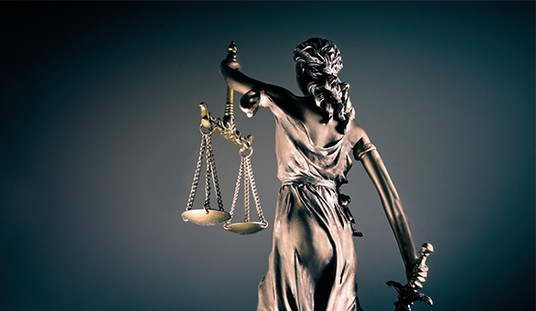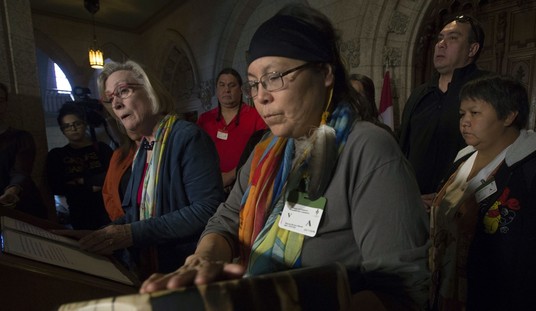Once again, yesterday’s Sunday New York Times treated us to the wisdom of Nicholas D. Kristof. It’s getting so bad that we have to decide which columnist is worse than the other — Frank Rich or Kristof. One may disagree, but this week I give Kristof the distinction of the single worst column in the paper.
Entitled “America’s History of Fear,” Kristof’s piece tried to explore why some Americans and New Yorkers might oppose the Park51 mosque. First, Kristof explains that bigotry is not “the only reason why someone might oppose the Islamic center in Lower Manhattan.” Then he proceeds as expected to show his readers why obviously that is precisely the reason why they oppose the mosque!
How does Kristof accomplish this? Not by seeking to prove that all the reasons given for opposition to the mosque stem from bigotry. That would be too difficult, since he would have to scrounge around to find the bigots. He might attack Glenn Beck, but as we all know, at the Mall rally last week Beck included praying for non-violence in one’s mosques, which he listed alongside churches and synagogues.
So what Kristof does is recite the old litany of well-known episodes of bigotry in America’s past, largely taken from the 19th century and early 20th century. We have the stories about anti-Irish, anti-German, anti-Italian, and anti-Asian bigots who have risen up in those periods. We had the Know Nothing movement that opposed the “Catholic menace”; the opposition to Irish immigrants — “No Irish Need Aply,” as the signs said at many business establishments; the WASP opponents of Jewish immigrants; the failure of the United States to allow thousands of Jews to gain freedom here during the start of the Holocaust; and of course the Japanese internment, which took place during the liberal presidency of Franklin Delano Roosevelt.
No one is proud of this sorry record in our country. As Kristof acknowledges, “most American stayed on the sidelines during these spasms of bigotry.” But still, he cannot help but use it to prove how bigoted our countrymen were in the past. The purpose: to show that we are just as bigoted today, except now, we attack Muslims rather than Catholics or Jews.
And, as Kristof himself realizes, the problem is that “some extremist Muslims do plot to blow up planes, and Islam has real problems to work out about the rights of women.” Tell that to Ayaan Hirsi Ali, whom in an earlier book review Kristof savagely attacked. She had told her father that “Islam is full of misogyny,” which upsets the columnist a great deal. He found her book “strident, potentially feeding religious bigotry.” So it seems that telling the truth about radical Islam is — you got it — nothing but bigotry.
He went on to again qualify his remark: “The repression of women, the persecution complexes, the lack of democracy, the volatility, the anti-Semitism, the difficulties modernizing, the disproportionate role in terrorism — those are all real. But if those were the only faces of Islam, it wouldn’t be one of the fastest-growing religions in the world today.”
So there must be in his eyes another existing and just as powerful moderate Islam. The problem is that he can’t find it. He claims, however: “There is also the warm hospitality toward guests, including Christians and Jews; charity for the poor; the aesthetic beauty of Koranic Arabic; the sense of democratic unity as rich and poor pray shoulder to shoulder in the mosque.”
The truth, however, was told by Bernard Lewis, who wrote: “For the moment, there does not seem to be much prospect of a moderate Islam in the modern world. This is party because in the prevailing atmosphere the expression of moderate ideas can be dangerous — even life threatening.” No wonder Kristof does not give his readers examples of the Islam he admires. He can’t find any.
And in the same Wall Street Journal forum, Akbar Ahmed pointed out that there are three strains in Islam today: mystic, modernist, and literalist. The third is today the majority view among practitioners of Islam; they believe they are under attack from infidels, and many of them advocate violence to stop their enemies. “Movements like the Muslim Brotherhood,” he writes, “Hamas, and the Taliban belong to this category.” And in his contribution, Tawfik Hamid writes that real moderate Muslims “must be honest enough to admit that Islam has been used in a violent manner … to seek domination over others.” To claim that Islam is only a peaceful religion “is a form of deception that makes things worse by failing to acknowledge the existence of the problem.”
That last observation by Mr. Hamid refers perfectly to the approach of Nicholas Kristof. Indeed, Kristof goes on in his column yesterday with the largest misleading sentence in his article. Noting that in past decades anti-Catholics used the acts of “the most venal wing of the Catholic Church as representative of all Catholicism,” he then writes, “fundamentalist Wahabis (sic) today are caricatured as more representative of Islam than the incomparably more numerous moderate Muslims of Indonesia.”
As Mr. Kristof should note, however, the problem in the United States is that about eighty percent of American mosques are funded by the Saudis, and indeed are Wahhabi institutions. Scores of articles have appeared detailing the kind of words spoken therein by Imams, and the nature of the writings and textbooks they use in their schools — which promote anti-Semitism, opposition to Christians and other infidels, the institution of Sharia law, and the waging of Jihad.
Then Kristof goes on to point out that in the 19th century, “fears were stoked by books written by people who supposedly had ‘escaped’ Catholicism,” in which they recounted obviously fraudulent and fanciful stories of kidnapped girls, the raping of nuns by priests, and the like. Again, the problem is that the accounts by people who have left the faith of Islam, like Hirsi Ali, are not fanciful: they are true. Perhaps Mr. Kristof should read the memoir of PJM’s Phyllis Chessler, who writes in her book The Death of Feminism about her own shattering experiences after marrying a Muslim man.
Then again, Kristof accounts all the ways in which past bigotry inflamed violent outbursts against Germans, Jews, Chinese, etc. Old immigrants newly assimilated, he says, target the newest immigrants. Hence what he calls “the fear-mongering about the proposed Islamic center.”
So there it is: opponents of the mosque are fear-mongers. They are, in other words, bigots — precisely what he says at the article’s beginning he is not arguing. He does not present any of the valid concerns I and others have pointed to earlier — the contradictory anti-American and Islamist statements of Imam Rauf, the nature of the mosque’s funding, the refusal of the imam to condemn terrorist groups like Hamas, etc. To Kristof, it is easier to ignore these. If he had not, he would not have been able to make the argument of bigotry.
He concludes by saying that Americans “have called on moderates in Muslim countries to speak out against extremists,” but he neglects to say few have done so and one has to look for a needle in a haystack to find them. So he turns this around and says that Americans must “have the guts to do the same at home.”
To Mr. Kristof I simply say: We are tolerant; we are for freedom of religion; we only do not want to be ostriches with our heads in the sand, denying the reality of radical Islam and exaggerating the extent and power of a practically non-existent moderate Islam.
I do not expect Nicholas Kristof to get it. After all, he writes for the New York Times.
Two Labor Day recommendations:
At the New Republic, the historian Michael Kazin takes his journal to task for ignoring the situation of today’s workers and the union movement. As in the past, he sees them as the forefront of the movement for social change. The problem Kazin ignores is a simple one: the old organized blue-collar working class no longer makes up the trade union movement. Today it is white-collar and particularly public workers who compose its majority; their impact is to bankrupt state economies with the kind of contracts that most workers do not have. They blackmail politicians to continually fund their outrageous demands, and the Democratic Party is beholden to them. No wonder all the examples he looks back on with pride are from the 1930s.
On the same website, E.J.Dionne, who misses big labor, tells the truth Kazin ignores: “Only 12.3 percent of American wage and salary workers belong to unions, according to the Bureau of Labor Statistics, down from a peak of about one-third of the work force in 1955. A movement historically associated with the brawny workers in auto, steel, rubber, construction, rail, and the ports now represents more employees in the public sector (7.9 million) than in the private sector (7.4 million).”
Nothing like telling the truth. But Dionne remembers that labor used to have “a disdain for elitism.” He thinks this should lead to a rebirth of the movement. But doesn’t he realize that these same working-class voters who disdain elitism are the Reagan Democrats of the past and the tea partiers of today? What they reject is the elitism of pundits like Dionne and Kazin, who pine for the old socialist movement and never understand why it will not be reborn.
And finally, the libertarian writer Todd Seavey has a great book recommendation on his blog today — the major book by my friend about whom I have written in the past, Martin J. Sklar. You can read Seavey’s blog here.
Addendum: 8:50 pm, EST.
Well, I think Nicholas Kristof doesn’t appreciate my blog. Here is the link to his recent Tweet. I guess the limitation on twitter gives him the excuse not to reply to its contents. Well, at least he clearly doesn’t like my title!









Join the conversation as a VIP Member